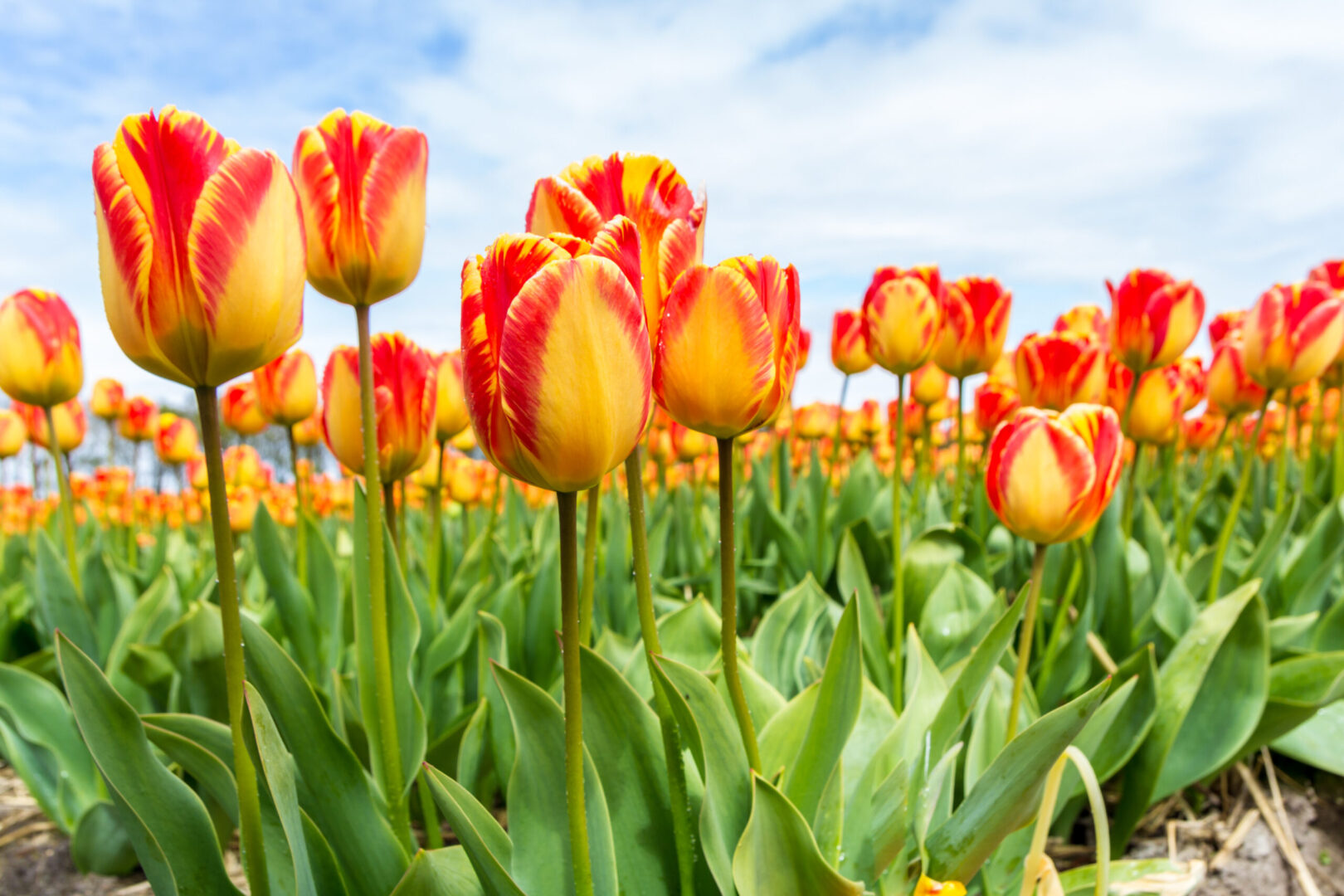Beautiful Flowers with an Amazing History
In 1593, a Flemish botanist named Carolus Clusius was sent some tulip bulbs by a friend of his who was the Austrian ambassador to the Ottoman Empire. When Clusius accepted the position of curator at the botanical gardens in Leiden, Holland, he took his bulbs with him. The first tulip to bloom in Holland bloomed in his private garden in 1594.
In the early part of the 1600s, Europe was coming out of the Dark Ages and people were fascinated by these strange new flowers and the demand began. This led to what is now referred to as Tulipomania, a period between 1634 and 1637 when tulips were selling for exorbitant prices.
They were so valued that, for a short time, they became a form of currency, like silver and gold. At the height of the craze, three bulbs of a tulip variety called Semper Augustus sold for the modern-day equivalent of around $30,000!
It’s said that at one point, more “rights” to harvested bulbs were being sold than, in reality, existed bulbs in all of Europe. As so often happens when a market is based on “Futures” the market crashed. People who had been millionaires were suddenly paupers. Some people even committed suicide. And all because of—The Tulip.
How to Grow Tulips
Tulips are native to the mountains of Turkey and Russia, therefore, they need a period of “vernalization” or cold, before blooming. The mountainous regions to which they are native have very cold winters and dry summers, so tulips do best in these conditions (so don’t put them where they will get hit with in-ground sprinklers all summer long.)
Because tulips are edible, they sometimes have challenges here in Central Virginia, but I have some in my yard that has been there for years—and are not bothered by pests (either above ground or below). Planting tulip bulbs deep (about 10 to 12”) means the digging critters tend to miss them. Squirrels don’t dig that far down and voles tend to use mole tunnels—which are usually 6 to 8” down. If you plant deeper, the voles and squirrels miss them.
For above ground pests, like rabbits and deer, I simply either mix my tulips with or surround them by daffodils. Daffodils are poisonous, period. Deer don’t eat them, squirrels don’t, rabbits don’t. I’ve sat on my deck and watched as a deer moseyed around the corner, sniffed at the daffodils surrounding a nice patch of delicious red tulips—and kept on walking.
By the way, an advantage to planting tulips so deep is that you can cover them with dirt up to the six-inch depth and set daffodil bulbs right on top. The tulips will come up in between the daffodil bulbs. If you want to get even fancier, cover the daffodils, then put pansies right dab smack on top. Instant garden. The pansies go all winter and provide a beautiful under-planting when the bulbs bloom in the spring. I talked about this last week in my blog on Lasagna Gardening.
If you like fragrance, you can substitute hyacinths for the daffodils (deer and voles don’t like them either). Just remember, tulips always go in the bottom layer, daffodils or hyacinths always in the middle. Small bulbs like crocus or grape hyacinths can even go on top of the daffodil layer if you want.
If you garden smart, you can have a bouquet of tulips in your yard. Come in and let me help you pick out the best for your garden.

